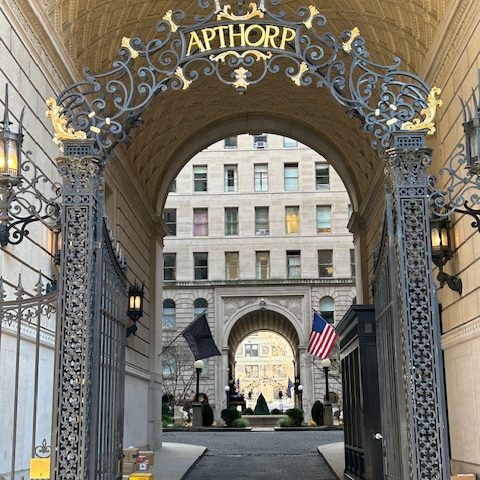
11 Iconic West End Avenue, New York City Buildings
West End Avenue from W. 70th Street north to W. 107th Street, has always been considered a prominent avenue in New York City. The avenue went through two phases of growth. From 1885-1900, the street was a combination of upper-middle-class single-family row houses with some French flats and Protestant churches. From the period 1910 to 1930, most of the earlier buildings were replaced with larger apartment houses, some rising twelve to sixteen stories. The avenue is known for its historic architecture and presents a mix of residential styles. So take a stroll along this grand avenue and enjoy all that West End Avenue has to offer.
235 West End Avenue (located between 70th & 71st Streets)

This prewar condominium was erected in 1928 and converted to condominiums in 1987. Its design is an excellent example of a Medieval Revival Building. The outside of the building is adorned with a black facade and Limestone with Terra Cotta ornamentation on the lower levels. While it is one of the more recent additions to West End Avenue, it is known for its modern design and houses a mix of high-end residences.
249 West End Avenue (located between W. 71st & 72nd Street)

Completed in 1893, this five-story Romanesque Revival building stands squeezed between apartment buildings three times its height. It was originally built as one of five homes intended to look like one large building. In 1915 and then in 1925, the owner, Mrs. Mary Cook declined offers from developers on the north and south sides of her home. In 1932 the building became home to the Continental Club and then in 1941, it was converted to apartments.
The Apthorp – 390 West End Avenue (located between W. 78th & 79th Streets)

One of the most iconic residential buildings on the Upper West Side. The Apthorp was built in 1908 in the Italian Renaissance Revival style and is known for its grand architecture, including a central courtyard. At the time of its construction, the 163-residence Apthorp was the largest residential building in existence. Over the years, the Apthorp has attracted many media personalities, including writers, actors, and celebrities. Notable residents include Cyndi Lauper, Conan O’Brien, George Balanchine, Nora Ephron, Lena Horne, and Al Pacino to name a few. In addition, former U.S. representative Beto O’Rourke once worked as a nanny for a family who lived in the Apthorp.
471 West End Avenue (located between W. 82nd & 83rd Streets)
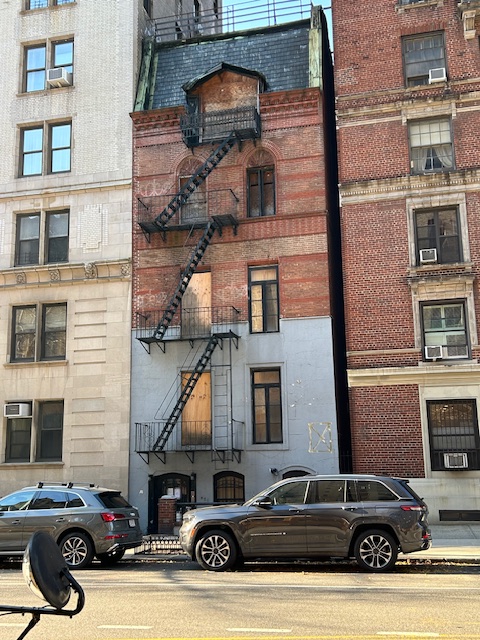
It was completed in 1886 as one of six houses that would wrap the southwest corner of West End Avenue and 83rd Street. This four-story building currently has eight units. The building features decorative brickwork, round arch windows with shell tympana, a corbelled brick and terra-cotta cornice, and possibly historic metal grillwork on the front doors with house number medallions. The home originally had three stories but a fourth story was added in 1912. Squeezed in between two apartment houses, it looks rather forlorn and out of place today.
Leech House – 520 West End Avenue (located on the northeast corner 85th Street)
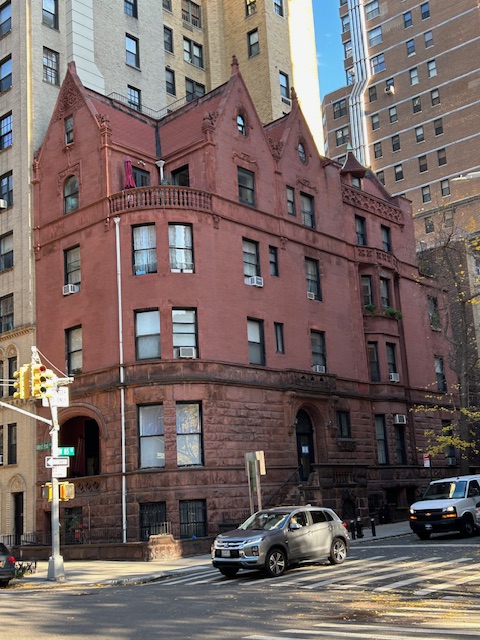
The house was originally built as a single-family residence in 1892 as the residence of Isabella and John B. Leech. 520 West End is a Romanesque Revival building, built of blocks of rusticated limestone on the first two floors with tan-colored Roman brick above. The entrance, above a side-hugging stoop, sits within a Romanesque arch with an ornate wrought-iron fan. A mixture of Romanesque, Elizabethan, and Gothic Revival styles have combined to create a castle of rough-cut sandstone, tan brick, and orange roof tiles. A curved corner semi-turret, multiple gables, and balconies result in a solid structure.
In 1905 the residence was converted into the Gordon-Winston School. The New York Times described it as a “School for young ladies. To specialize: music, art, languages literature, history, etc. Every care and protection given while there is perfect freedom from the discipline of school life. Students are introduced to what is best socially and educationally.” Today it is a 4-story rental building housing 10 units.
535 West End Avenue (located on the southwest corner of W. 86th Street)

This luxury condo building was completed in 2010 and stands out as one of New York’s grandest apartment houses. The twenty-story building has 22 half and full-floor residences ranging from 3,700-8,500 sq. ft. This modern structure blends seamlessly into other old-world buildings along West End Avenue.
St. Ignatius – 552 West End Avenue (located at the southeast corner of 87th Street)
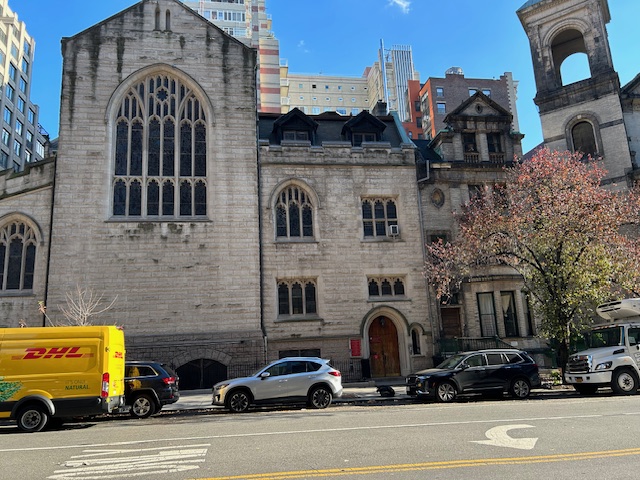
The Episcopal Parish of St. Ignatius of Antioch purchased this plot in 1901 and built this English Gothic church which was completed in 1902. It was added to the National Register of Historic Places in 1999. The church is distinguished by its stained glass windows, its Roman brick interior, and its ceiling tiles, which are interlocking and self-supporting. It is a small church that seats only 325 persons and is dwarfed by the Church of Saint Paul and Saint Andrew to its’ right.
638 West End Avenue (located between 90th & 91st Streets)

Built in 1900 this Georgian-style residence is reminiscent of homes in London’s Mayfair District. The first-story entrance is fronted by a limestone portico with a cluster of Ionic columns at each side while the door is flanked by two Ionic pilasters at each side. The 2nd and 3rd floor facades are red brick with white stone trimming around the windows. The 4th-floor facade stands out for its contrast of red brick and white stone.
640 West End Avenue (located at the northeast corner of W. 91st Street)

Designed in a neo-renaissance style this building was built in 1912 and converted to condominiums in 1986. Faced in beige brick and trimmed in limestone this attractive 12-story brick building is easily recognized for its abundant ivy-covered facade. The units are characterized by 10′ ceilings, oversized windows, large dimensions, and rich architectural details.
860-868 West End Avenue (located between W. 102nd & 103rd Streets)

These five Neo-Renaissance style brick and limestone houses were originally built in 1920 and converted to apartments in the 1930’s. They are considered the largest surviving group of row houses on West End Avenue.
Stanley Court – 945 West End Avenue (located between W. 106th & 107th Streets)

Built in 1905 this building has a total of 47 units and was the first of the twelve-story apartment houses on the avenue. Built with a steel frame, limestone base, brick upper stories, terra-cotta trim, and spacious apartments it became a prototype for the apartment buildings erected over the next couple of decades.




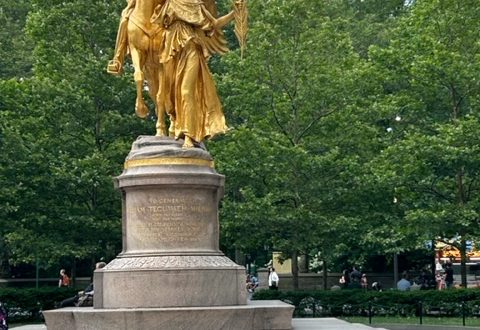
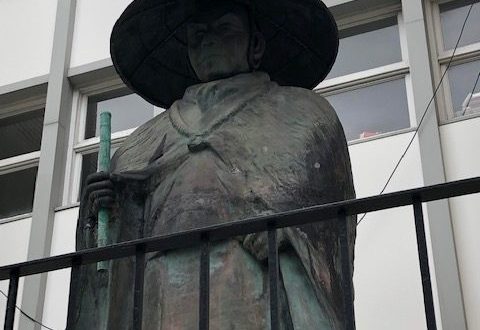
One Comment
Amiya Gaylord
My brother suggested I might like this blog He was totally right This post actually made my day You can not imagine simply how much time I had spent for this info Thanks